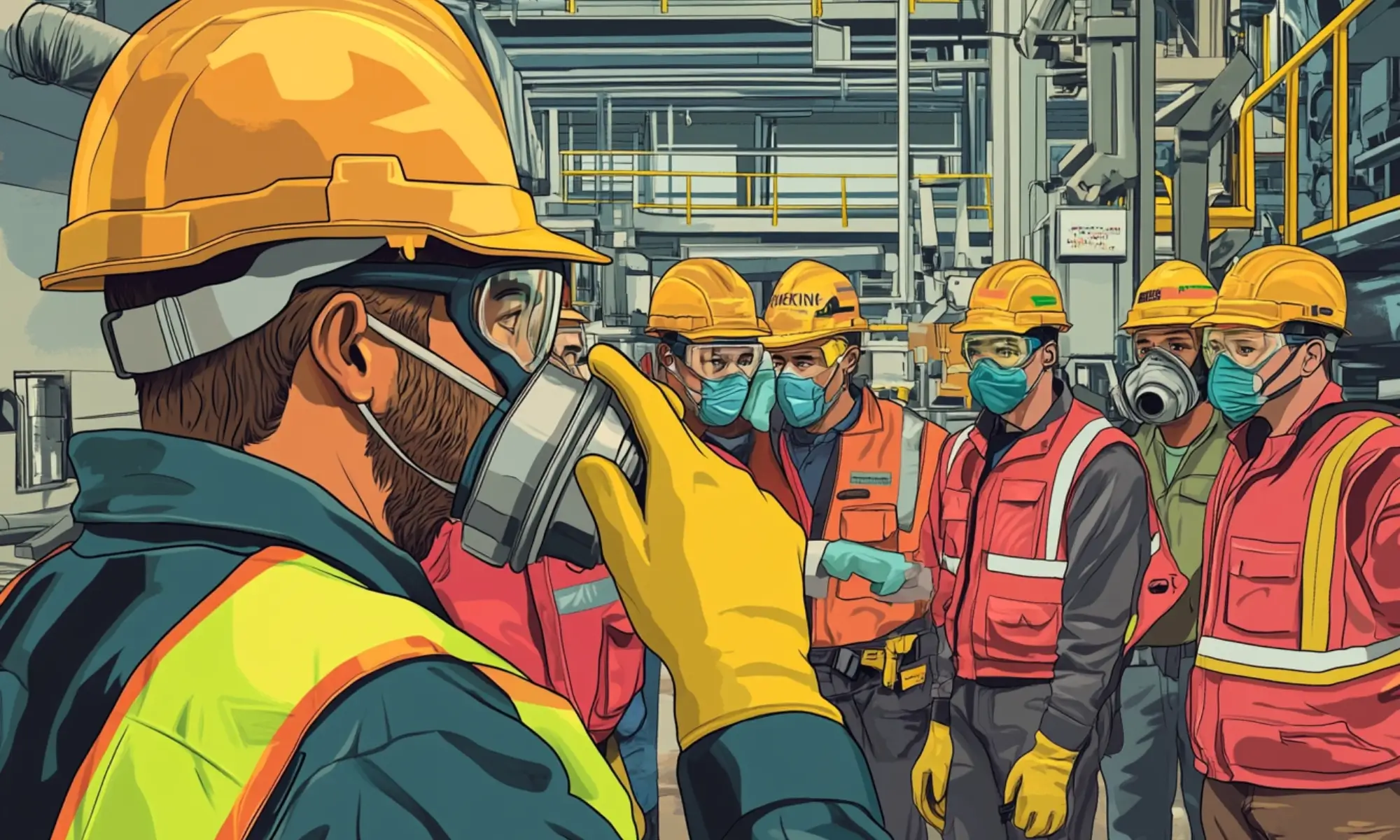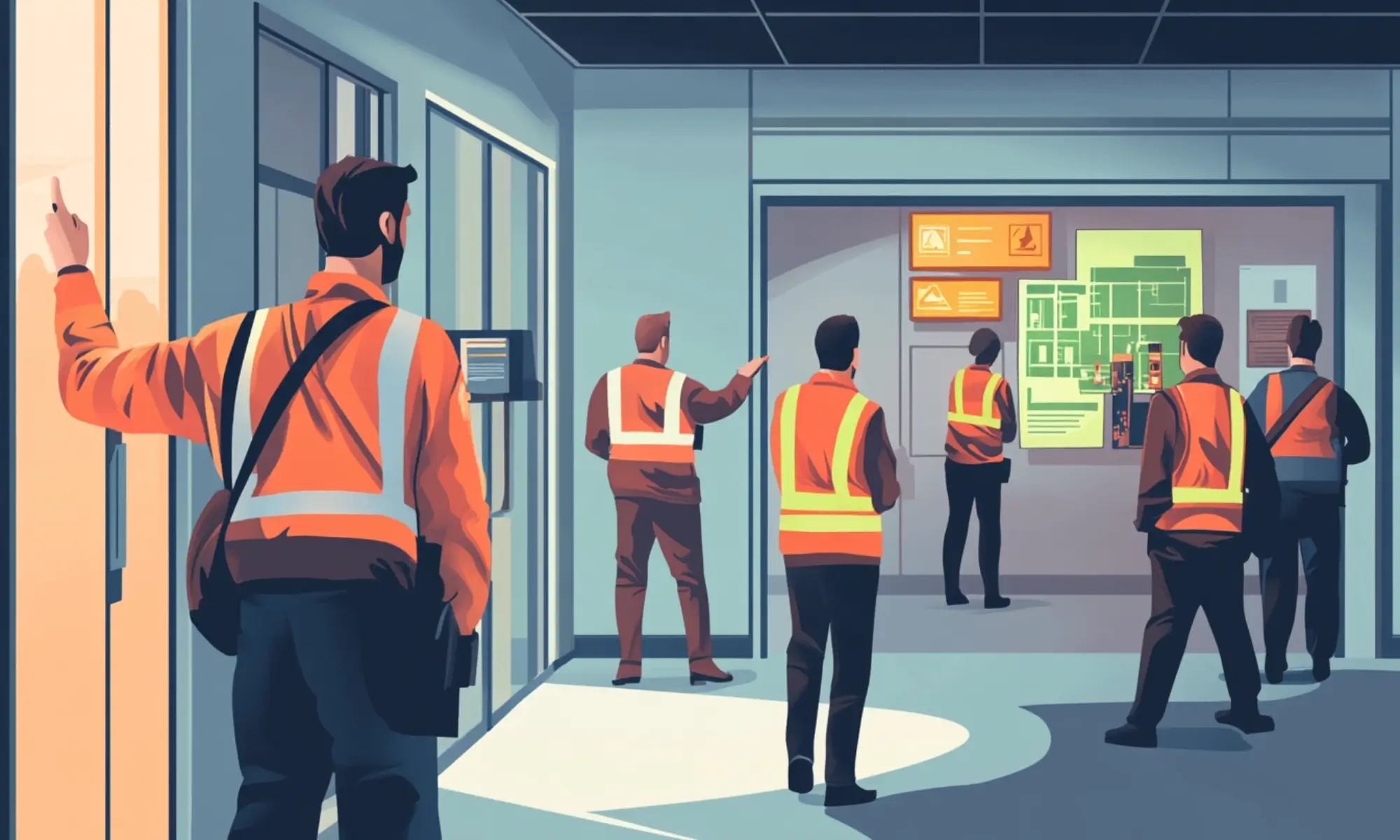Maintaining a safe workplace is essential for employee well-being and organizational success in today’s dynamic and often high-pressure work environments. Implementing brief, focused safety discussions—commonly known as “2-minute safety talks” or “safety moments”—can significantly enhance your workplace’s safety culture. These concise sessions address specific hazards, reinforce safe practices, and keep safety in employees’ minds.
This comprehensive guide explores the concept of 2-minute safety talks and their benefits and presents ten actionable safety topics to implement in your workplace.

Understanding 2-Minute Safety Talks
2-minute safety talks are short, focused discussions centred around a specific safety topic relevant to the workplace. Typically conducted at the start of a shift, meeting, or during breaks, these talks aim to:
- Raise Awareness: Highlight potential hazards and preventive measures.
- Reinforce Safe Practices: Remind employees of established safety protocols.
- Encourage Engagement: Foster open communication about safety concerns.
By integrating these brief discussions into daily routines, organizations can cultivate a proactive safety culture prioritising employee well-being.
Benefits of Implementing Brief Safety Talks
Regularly conducting 2-minute safety talks offers numerous advantages:
- Enhanced Hazard Recognition: Employees become more adept at identifying and addressing potential risks.
- Improved Compliance: Frequent reminders help ensure adherence to safety regulations and procedures.
- Increased Accountability: Regular discussions promote a shared responsibility for maintaining a safe work environment.
- Reduced Incidents: Proactive safety education can lead to a decrease in workplace accidents and injuries.
- Boosted Morale: Demonstrating a commitment to safety can enhance employee trust and job satisfaction.

Essential 2-Minute Safety Topics
Selecting pertinent topics is crucial for the effectiveness of these brief sessions. Below are ten actionable safety topics, each designed to address specific workplace hazards and promote a safety culture.
1. Personal Protective Equipment (PPE) Usage
Proper selection, use, and maintenance of PPE.
Key Points:
- It is important to wear appropriate PPE for specific tasks.
- Correct fitting and adjustment of PPE to ensure maximum protection.
- Regular inspection and maintenance of PPE to ensure functionality.
Actionable Tip: Demonstrate how to wear PPE and encourage employees to check their equipment daily.
2. Ergonomic Practices
Preventing musculoskeletal disorders through proper ergonomics.
Key Points:
- Correct posture while sitting and standing.
- Proper lifting techniques to avoid back injuries.
- Adjusting workstations to fit individual needs.
Actionable Tip: Provide ergonomic assessments and encourage employees to adjust their chairs and desks for optimal comfort.
3. Slips, Trips, and Falls Prevention
Identifying and mitigating common causes of slips, trips, and falls.
Key Points:
- Keeping walkways clear of obstructions.
- Promptly cleaning up spills and addressing uneven surfaces.
- Using appropriate footwear to enhance grip and stability.
Actionable Tip: Conduct a quick walk-through to identify and rectify potential trip hazards in the workplace.

4. Emergency Procedures
Ensuring preparedness for emergencies.
Key Points:
- Familiarity with evacuation routes and assembly points.
- Understanding roles and responsibilities during emergencies.
- Regularly practising emergency drills.
Actionable Tip: Review the nearest emergency exits and designate specific employee roles during an evacuation.
5. Hazard Communication
Effective communication regarding hazardous materials.
Key Points:
- Understanding labelling systems and Safety Data Sheets (SDS).
- Proper storage and handling of hazardous substances.
- Training employees on the risks associated with specific materials.
Actionable Tip: Conduct a quick review of SDS for commonly used chemicals and ensure all employees know where to find them.
6. Electrical Safety
Preventing electrical hazards in the workplace.
Key Points:
- Identifying common electrical hazards and their prevention.
- Proper use and maintenance of electrical equipment.
- Understanding lockout/tagout procedures.
Actionable Tip: Remind employees to report damaged cords or malfunctioning equipment immediately.
7. Tool and Equipment Safety
Safe usage and maintenance of tools and machinery.
Key Points:
- Correct operation procedures for tools and equipment.
- Regular inspections and maintenance schedules.
- Proper storage to prevent accidents.
Actionable Tip: Demonstrate the correct use of a commonly used tool and emphasize the importance of following the manufacturer’s instructions.

8. Fire Safety and Prevention
Reducing fire risks and ensuring readiness.
Key Points:
- Identifying fire hazards and implementing preventive measures.
- Proper use of fire extinguishers and other fire-fighting equipment.
- Establishing a clear evacuation plan.
Actionable Tip: Conduct a brief demonstration on using a fire extinguisher and review the location of fire exits.
9. Mental Health and Well-being
Promoting a supportive and healthy work environment.
Key Points:
- Recognizing signs of stress and fatigue.
- Encouraging open communication about mental health.
- Providing resources for mental health support.
Actionable Tip: Share information about available mental health resources and encourage employees to take regular breaks to reduce stress.
10. Safe Driving Practices
Enhancing safety for employees who drive as part of their job.
Key Points:
- Adhering to speed limits and traffic regulations.
- Regular vehicle maintenance checks.
- Avoid distractions while driving, such as mobile phone use.
Actionable Tip: Remind employees to perform a quick vehicle inspection before starting their shifts and to report any issues immediately.

Tips for Conducting Effective Safety Talks
To maximize the impact of your safety talks, consider the following strategies:
- Be Concise: Keep the discussion focused and adhere to the 2-minute timeframe to maintain attention.
- Engage Employees: Encourage participation and feedback to foster a collaborative atmosphere.
- Use Real-Life Examples: Relate topics to actual incidents or near-misses to underscore relevance.
- Provide Visual Aids: Utilize diagrams, charts, or demonstrations to enhance understanding.
- Follow-up: Reinforce key points in subsequent talks and monitor the implementation of discussed practices.
Conclusion
Integrating 2-minute safety talks into daily routines is a practical and effective strategy to enhance workplace safety. Organizations can foster a culture of safety awareness and responsibility by addressing relevant topics concisely and engaging employees in meaningful discussions.
Utilizing available resources and tailoring talks to specific workplace needs will further ensure the success of these initiatives. Prioritizing safety protects employees and contributes to the organization’s overall productivity and reputation.

